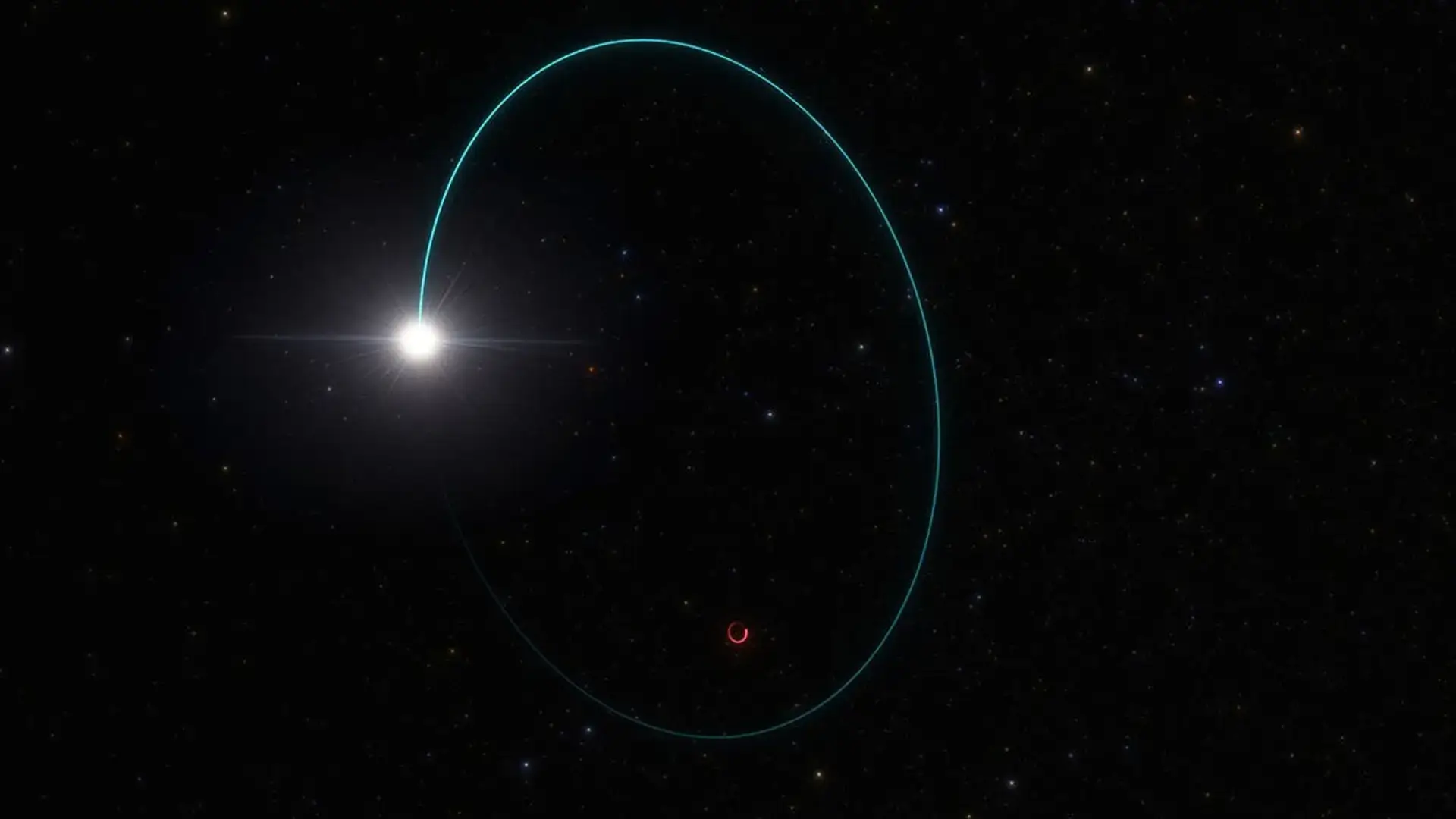Astrophysicists have stumbled upon a remarkable discovery in the cosmos. They’ve located an ‘Peculiar’ black hole within the confines of the Milky Way galaxy. Named Gaia BH3, this black hole boasts a mass approximately 33 times that of our sun, making it the second-largest known black hole in our galaxy, surpassed only by the supermassive black hole at the galactic center.
The discovery of this black hole is a significant achievement for the scientific community. Black holes are incredibly dense entities with such immense gravitational pull that even light cannot escape their grasp. This makes their detection quite challenging. Gaia BH3 was identified through careful observations made during the European Space Agency’s (ESA’s) Gaia mission, which is compiling a comprehensive stellar catalog. This black hole was detected because it caused a noticeable wobble in a nearby star that’s orbiting it.
The data for this study was gathered from the European Southern Observatory’s (ESO’s) Chile-based Very Large Telescope, along with other ground-based observatories. These resources were crucial in confirming the mass of the black hole. The Gaia mission, with its goal of creating a massive stellar census, has been instrumental in uncovering such hidden celestial marvels.
Gaia BH3 is not just massive but also exhibits unique characteristics. This black hole and its companion star are moving in the opposite direction to the typical stellar orbit within the Milky Way. This, according to Pasquale Panuzzo, a research engineer at the French research agency CNRS working at the Observatoire de Paris and the lead author of the study, is something researchers did not expect to witness.
Based on the findings, researchers believe that Gaia BH3 likely formed after a star, over 40 times more massive than our sun, met its end. This process of stellar death and subsequent collapse often results in the formation of black holes, known as stellar black holes. Gaia BH3 is now the largest known stellar black hole.
The progenitor star of Gaia BH3 was primarily composed of hydrogen and helium. Such a chemical composition, known as low metallicity, was common in stars of the early universe. As per the study, this star likely formed quite early in the universe’s history, possibly around 2 billion years post the Big Bang event.
The lifespan of a star ends in a grand explosion known as a supernova. This event scatters some material into space while the remaining violently collapses to form a black hole. The discovery of Gaia BH3, according to Panuzzo, supports stellar evolution models that posit that only low metallicity stars, like Gaia BH3’s progenitor star, can produce massive stellar black holes.
Just as old as the progenitor star, Gaia BH3’s companion star has around 76% of the mass of our sun. It’s a bit colder but approximately ten times more luminous. This star orbits the black hole on an elliptical path, varying between roughly 4.5 to 29 times the distance between Earth and the sun – a unit of measurement known as an astronomical unit (AU).
One of the intriguing findings of this study is that the companion star’s chemical composition shows no alterations. This indicates that the supernova explosion that led to the black hole’s formation did not impact the companion star. This was an unexpected result, as per Elisabetta Caffau, an astronomer at the Observatoire de Paris and a co-author of the study.
The discovery of Gaia BH3 has raised a pertinent question in the scientific community: Just how large can stellar black holes get? As per Panuzzo, the maximum mass for a stellar black hole is a topic of active scientific debate.




